Racial terror has long been the go-to response for aggrieved whites in America. The insurrectionists waving Confederate flags who attacked the Capitol on 6 January to overthrow the results of the 2020 national elections weren’t an anomaly. The intimidation, disempowerment and humiliation of the “other” to maintain entitled rights has been a recurring narrative since the arrival of European colonizers in America and the growth of the slave trade.
“The trigger for white rage, inevitably, is Black advancement,” Carol Anderson writes in her seminal 2016 book, White Rage. “It is not the mere presence of Black people that is the problem; rather, it is Blackness with ambition, with drive, with purpose, with aspirations, and with demands for full and equal citizenship.”
This is a lens through which to understand the significance of the centenary of the 1921 Tulsa Race Massacre, among the worst acts of violence in US history, and a past that lives today in the ongoing political, economic and extrajudicial attacks on Black people. As the United States and the world commemorate the anniversary of the murder of George Floyd, the long-hoped-for racial reckoning still awaits a country seemingly unwilling to acknowledge in its historical memory the most terrible, deliberately obscured sins in its past and their impact today.
Between 31 May-1 June, white residents, peace officers, and soldiers attacked the historical Greenwood district of Tulsa, Oklahoma, known as the “Black Wall Street”, killing an estimated 300 residents, displacing upwards of 1,000 more, and inflicting irrevocable economic damage to a thriving business district created by and for Black Americans. It’s believed to have been the first time that bombs were dropped on an American community, and the actions undertaken by the white marauders, who received significant resistance from both everyday Black civilians and soldiers recently returned from the first world war, wasn’t taught in Oklahoma school books and barely mentioned in national textbooks for generations afterwards.
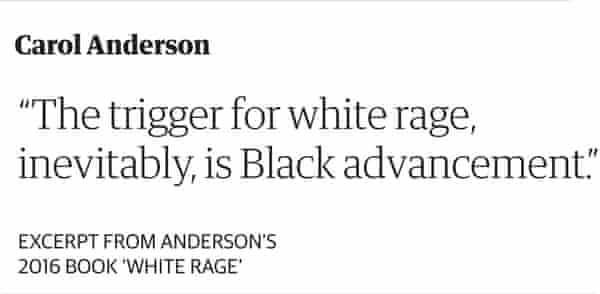
As Blacks were recklessly and wantonly raped, murdered, and driven from hard-earned homes and businesses, the cover-up by local and state government representatives was chillingly efficient. Survivors and their descendants held out hope across generations that the full truth of what happened to Black Tulsans would be acknowledged, and recompense would come. A century later, thanks to the last three survivors of the Tulsa Massacre and the descendants of those who were killed or survived the violence, the full horror may finally be understood.
For much of 1919, from March through November, more than 100 Black people were lynched, thousands were seriously wounded or died from mob actions, and over 30 cities across the United States were attacked by spasmodic, white-led violence including Charleston, South Carolina, Longview, Texas, and Syracuse, New York. Faced with post-pandemic fear and uncertainty following the devastatingly fatal spread of the Spanish flu a year before; the return of nearly 400,000 Black soldiers from combat in the first world war; a squeeze for housing and jobs traditionally held by white men; and the emergence of a thriving, robust Black middle and working class, white Americans in the south and the north saw Black strivers as an existential threat. They seized upon any reason, no matter how flimsy the excuse, to lay waste to their neighbourhoods and communities through physical attacks, as well as rhetoric and policies reminiscent of the past five years of American political life.
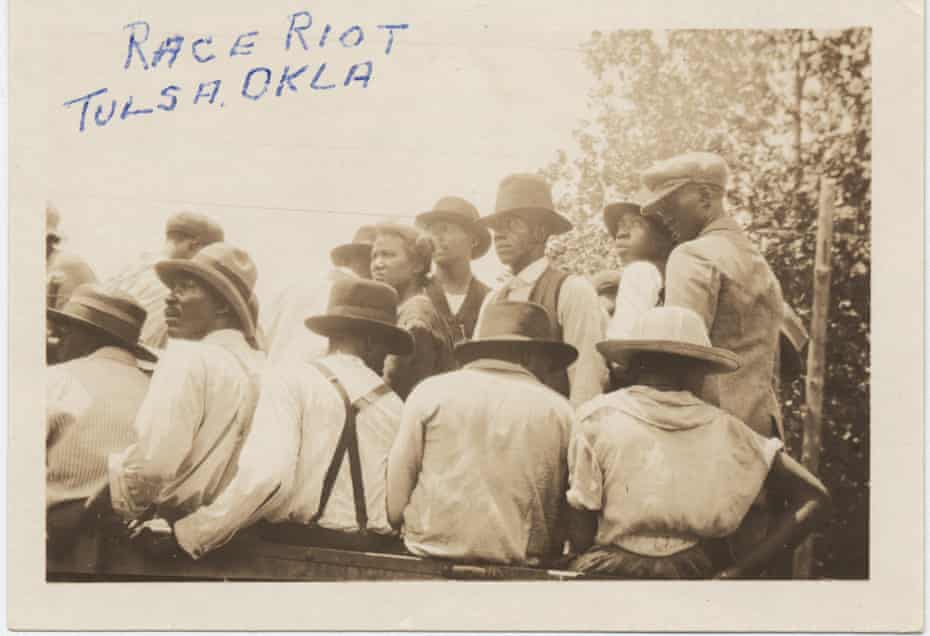
Over the past two years, artist and photographer Bayeté Ross Smith has re-visited the sites of Red Summer and the violence following the war, capturing present-day images through 360 VR (virtual reality) footage and pairing those with interviews of descendants, historians and activists to bring greater consciousness to a little understood and discussed historical period of the United States that is still relevant today. In addition to Tulsa, Smith visited Washington DC, where white men in military uniform laid siege to Black neighbourhoods forcing President Woodrow Wilson to call in the National Guard; Omaha where 10,000 whites attacked a county courthouse where they captured and burned alive a Black man accused of rape; and Chicago, where an estimated 50 people were killed, over 500 injured and more than 1,000 Black families left homeless in the greatest violence in the Red Summer. And he also visited East St Louis, Illinois, where whites fearful of losing political power attacked Black voters and their white allies two years before the Red Summer.

Before and after the Red Summer, Black Americans fought white rage with whatever weapons they could; following the first world war Black veterans became a core factor in that resistance. As NAACP co-founder and scholar WEB DuBois wrote in The Crisis in May 1919, “we return (from World War I) fighting”. DuBois had previously called for Blacks to “close ranks” with their white counterparts at the outset of the war and volunteer to serve. Returning home to the unchanged realities of systemic racism and violence drew many to political action. The NAACP had less than 10,000 members in the early 1900s, but grew to 100,000 by the early 1920’s.
Out of the ashes of Red Summer, the East St Louis riots, the Tulsa Race Massacre, and the later civil rights efforts of the United Negro Improvement Association, founded by revolutionary activist Marcus Garvey, the seeds of the modern civil rights movement and ultimately Black Lives Matter were sown.
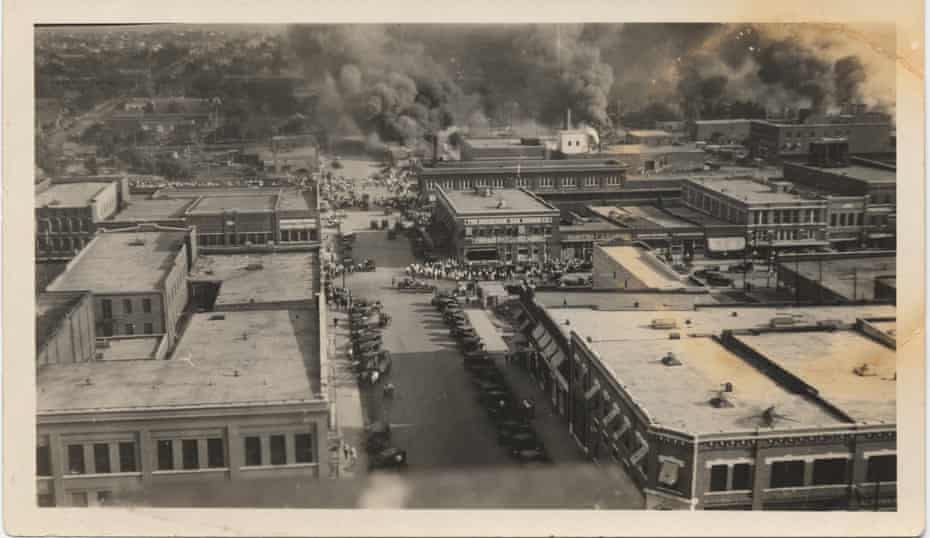
Jamaican writer Claude McKay’s July 1919 poem, If We Must Die, was the Black anthem for the Red Summer and endures today as a call to never accede to terror, violence or injustice. In it he urges “If we must die, let it not be like hogs….Like men we’ll face the murderous, cowardly pack, Pressed to the wall, dying, but fighting back!” Yet, without full understanding and acknowledgement of the lessons and still resilient legacy of that span of American history, we are inevitably sentenced to relive a contemporary version of it.
In the century since the Red Summer and Tulsa Massacre, historical memory regarding race has perhaps been among the greatest casualties in the war for a commonly shared national narrative. Within the next 20-25 years, the United States will be a country of so-called “minorities”, people of color, further interrogating the ever-relevant question of “who is us?” Can someone be “American” without embodying a fossilized, milquetoast archetype still upheld by many in the United States? In his 1925 poem, I, too am America, Langston Hughes proclaimed his right to full citizenship and recognition, but in the 21st century “Americanness”, and what parts of history deserve to be explored, are still being debated. The denial of truth risks not only the social gains for intersectional racial justice, but also the possibility of a true reckoning with this country’s terrorism of people of color, including Native Americans, Asian Americans, Pacific Islanders and Latinos.
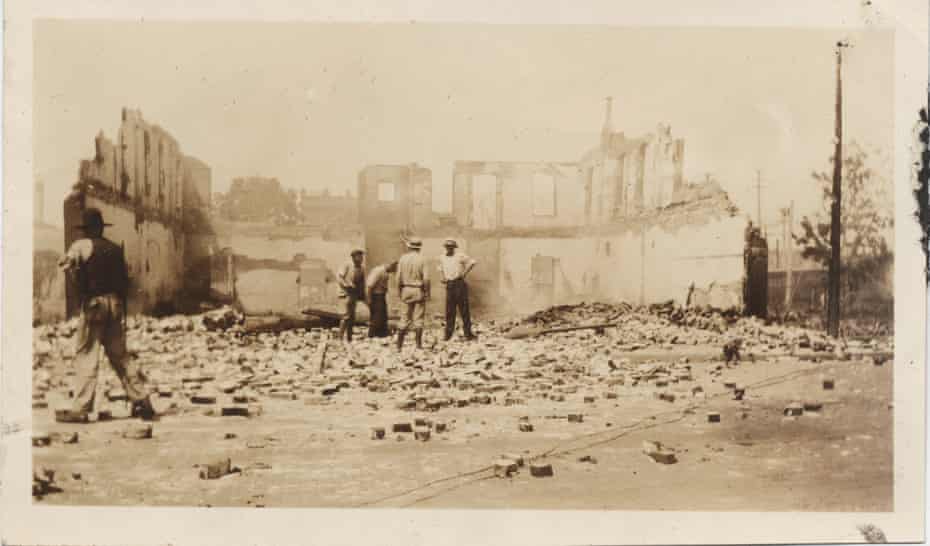
Racial terror undermined the promise of Reconstruction in the wake of the civil war. Between 1865-1877, Freedmen saw unparalleled economic and political gains throughout the defeated south and in urban areas in the north where burgeoning opportunities in industry and commerce prompted the first Great Migration. White backlash – and fear of Black excellence – was swift, without true accountability, or justice. More than 1,000 lynchings occurred in the south by 1920; 90% of those killed were Black and more than half happened in Mississippi, Georgia, Texas, Alabama and Louisiana – also locations of Red Summer murders. Louisiana saw two of the most horrifying instances of racial massacres. In April 1873, approximately 150 Black men were killed by armed whites for peacefully and freely assembling in front of a courthouse. More are thought to have perished but the precise number remains unknown as many bodies were thrown into the Red River. A year later in Coushatta, Louisiana, six white Republicans and 20 Black witnesses were killed by members of a paramilitary outfit called the “White League”.
Scores of Blacks migrated north, where the racial codes around housing, jobs and education had a less threatening veneer but were no more equitable than what was faced in the south. By the end of 1919, over a million Black Americans had relocated to northern communities such as Chicago and Philadelphia, whose Black populations grew by 148% and 500%, respectively.
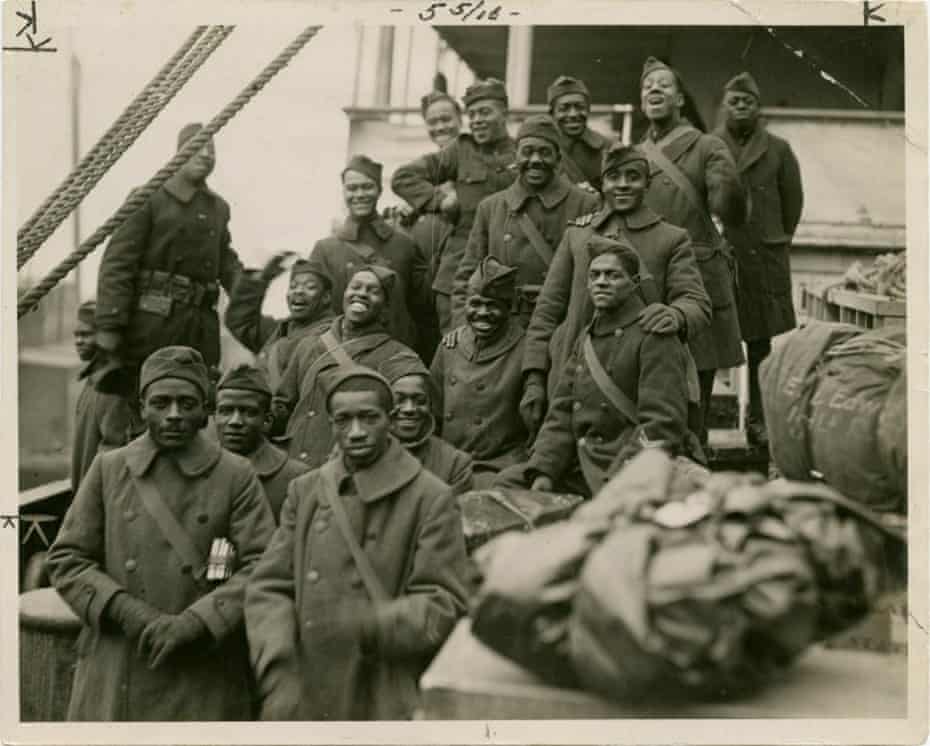
In the years immediately preceding the Red Summer, the United States was a country very much on edge, having formally entered the war in 1917, then facing a global Spanish flu pandemic a year later. In many urban hubs restless white residents blamed the spread of the disease on Black soldiers returning from the war as well as international migrants. To white men, Black men in uniform were especially a tremble-inducing sight, returning to America having proven themselves on the battlefield and received widespread recognition and awards from the French, alongside whom they often fought. Yet after the war’s end, more than 13 Black veterans were lynched across the United States – most while wearing their uniforms – according to the Alabama-based Equal Justice Initiative.
Wilson, the first southerner in the White House since the civil war and the second Democrat, largely ignored the racial violence that occurred between 1917-1923. As president, he enacted segregation within the federal government. He also infamously screened DW Griffith’s Birth of a Nation at the White House in 1915, praising the film, which glorified the Ku Klux Klan, saying it was “like writing history with lightning”. His tolerance and general blind eye to the year-long racist attacks, even when they occurred within view of the White House, gave tacit approval to the violence.
By mid-summer 1919, the pace of violent incidents had escalated. Justification often hinged on the enduring racist perception of Black men victimizing white women, but usually they were instigated intentionally to undermine or destroy some emblem of Black progress. As Quixotic as it ultimately was, resistance inspired communities of color across the country to advocate and mobilize with newfound vigor and hope. The individual toll of the Red Summer on communities across the country was often too heavy to overcome in many places – as the economic and psychological trauma proved to be too great for recovery. The 1921 Tulsa Race Massacre remains the most visceral example.

On 31 May that year, a 19-year-old Black shoe shiner named Dick Rowland entered the Drexel Building in downtown Tulsa to use one of the only public bathrooms accessible to Black residents. According to the Oklahoma Historical Society, he either accidentally stepped on her foot or startled a 19-year-old elevator operator named Sarah Page. Either way, she screamed, drawing bystanders to beat and detain Rowland for arrest by the local police. Black residents – including veterans from the first world war marched to the police station in protest and were met by a white mob looking to take Rowland. In the ensuing confrontation white civilians with the active participation of police, military soldiers and state agents attacked the Greenwood neighbourhood, known as “Black Wall Street”.
When it was over on 1 June, more than 300 Black residents were dead, thousands were injured and maimed, 1,200 homes were destroyed, and over a million dollars (in 1921 value) in damage was inflicted, according to NAACP executive secretary Walter White. In the aftermath, the official death toll was 36, though many Black bodies were burned, put in mass graves, driven away in trucks, or thrown in rivers.

“One story was told to me by an eyewitness of five colored men trapped in a burning house,” White recounted in a later report. “Four were burned to death. A fifth attempted to flee, was shot to death as he emerged from the burning structure, and his body was thrown back into the flames.”
BC Franklin, father of renowned historian and scholar John Hope Franklin, was a Greenwood district lawyer who survived and recounted that the “sidewalk was literally covered with burning turpentine balls”, from bombs dropped on the Black community by airplanes. “For fully forty-eight hours, the fires raged and burned everything in its path and it left nothing but ashes and burned safes and trunks and the like that were stored in beautiful houses and businesses.”
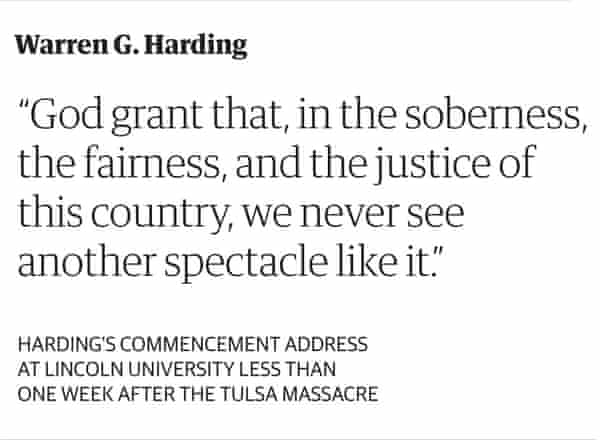
Wilson’s successor in the White House, Ohio Republican Warren G Harding is still among the most forward-looking presidents on racial equity and justice. Less than a week after the carnage in Tulsa, he gave the commencement address at Pennsylvania’s Lincoln University, the first degree-granting historically Black college and university. “God grant that, in the soberness, the fairness, and the justice of this country, we never see another spectacle like it,” he commented in reference to Tulsa. In his State of the Union address a month before, Harding asked Congress to pass anti-lynching legislation, a request still unfulfilled today.
In the weeks after the massacre, the Tulsa City Commission squarely laid blame for the deaths and destruction at the feet of Black residents, absolving the white mob of any wrongdoing. “Let the blame for this Negro uprising lie right where it belongs – on those armed Negroes and their followers who started this trouble and who instigated it and any persons who seek to put half the blame on the white people are wrong,” stated the body officially. No insurance claims made by Black survivors were honored and the only recompense of any kind went to a white gun store owner whose businesses was raided by white residents en route to terrorize the Greenwood community.
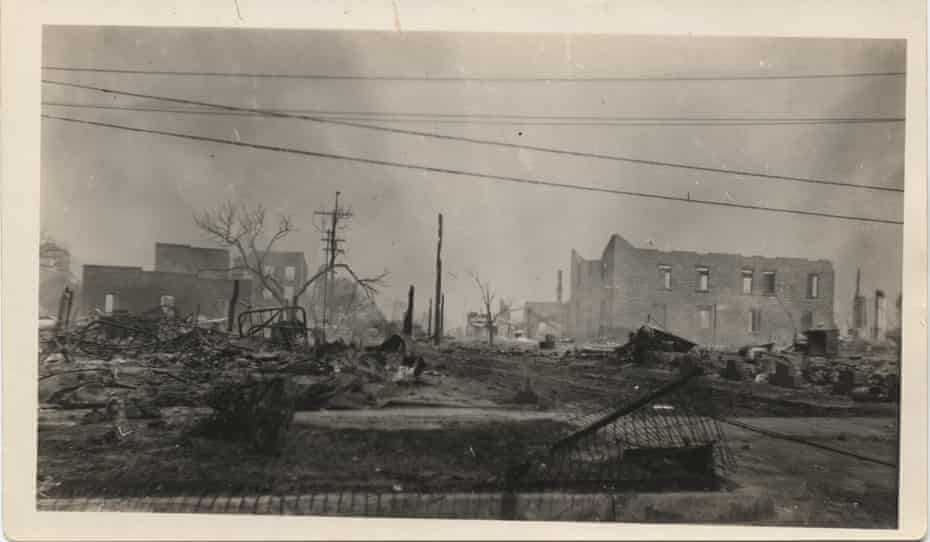
In 1997, the state of Oklahoma convened a study commission to fully examine what occurred in Tulsa, and the role of state and local government, law enforcement, the military and civilians – both Black and white. The report produced in 2000 affirmed the accounts of Black survivors and witnesses to the extent of the violence, targeted dismantling of Black wealth, and cover-up by authorities. Oklahoma’s governor at the time, Frank Keating, accepted the report but rejected its calls for reparations. A lawsuit filed by esteemed Harvard professor Charles Ogletree, along with civil rights attorney Johnny Cochran, among others, was eventually rejected by the US supreme court.
Three years ago, Tulsa mayor GT Bynum announced a citywide search for mass graves from the 1921 massacre, with one site having been found last fall in the midst of nationwide Black Lives Matter protests. Excavation of remains will resume in June. The remaining three survivors of the Tulsa Race Massacre – 107-year-old Viola Fletcher, her brother 100-year-old Hughes “Uncle Red” Van Ellis, and 106-year-old Lessie “Mama Randle” Benningfield Randle testified two weeks ago before Congress. The survivors are lead plaintiffs in a recent lawsuit for reparations.
“This story shouldn’t go away,” observes Dreisen Heath, a researcher and human rights advocate with Human Rights Watch who spearheaded the organization’s recent reporting on economic and policing inequities for Black Tulsa residents, as well as an historically grounded case for reparations to survivors and descendants of victims. “The [state] culpability is there [as well as] the continued preservation of whiteness and power in Tulsa. There is massive media coverage of [the Tulsa Massacre Centennial] and I appreciate it, but I also hope that news coverage encapsulates the continuing harm since the massacres. The book didn’t close in the late afternoon of June 1, 1921 when martial law was declared.”
The history of white rage and Black resistance is still being written.
Jimmie Briggs is a journalist with more than two decades of experience at the Washington Post, Village Voice, LIFE magazine, among others. The views expressed here are Jimmie Briggs’s own, written in his personal capacity, and should not be attributed to any organization.
Red Summers is a 360 video project by the artist and film-maker Bayeté Ross Smith on the untold American history of racial terrorism from 1917 to 1921. The project is funded by Black Public Media, Eyebeam, Sundance Institute, Crux XR and the Open Society Foundations.
The Link LonkMay 31, 2021 at 02:00PM
https://www.theguardian.com/us-news/2021/may/31/tulsa-race-massacre-at-100-act-of-terrorism
Tulsa race massacre at 100: an act of terrorism America tried to forget - The Guardian
https://news.google.com/search?q=forget&hl=en-US&gl=US&ceid=US:en

No comments:
Post a Comment